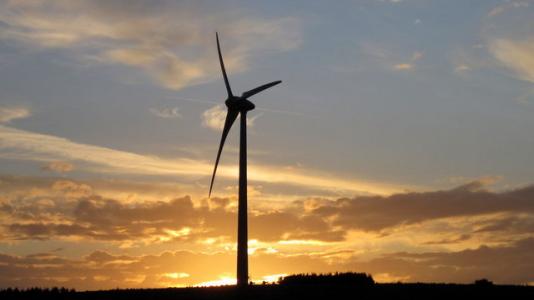
ARGONNE, Ill. — Wind energy lowers carbon emissions, but adding turbines to the current grid system does not eliminate emissions proportionally, according to a report by researchers at the U.S. Department of Energy’s (DOE) Argonne National Laboratory.
To test how wind energy affects carbon dioxide (CO2) emissions, Argonne scientists modeled the Illinois electric grid—power plants, production and demand—and tested how more wind power would affect the system. They found that adjusting for wind power adds inefficiencies that cancel out some of the CO2 reduction.
It’s actually the older technology in the background that hampers wind. Because the wind doesn’t blow all the time, operators occasionally have to turn on extra fossil-burning plants to keep up with demand.
“Turning these large plants on and off is inefficient,” explained study author Lauren Valentino. “A certain percentage of the energy goes into just heating up the boilers again.” Power plants are also less efficient when they’re not operating at full capacity.
Like many states, Illinois has pledged to get 25 percent of its energy from clean sources by 2025. But it still has a long way to go; in 2010, the state got 2.2 percent of its energy from wind.
“Illinois gets its strongest winds at night, when demand is low,” said co-author Audun Botterud, an Argonne energy systems engineer. “At the same time, we have a high fraction of very large, inflexible power plants in the system.” This is a problem because it’s inefficient to turn larger plants off and on to accommodate sudden influxes of wind power.
The best solution, he said, would be a way to store unused energy when the wind is blowing. But we don’t have a good way to store large amounts of electricity, a problem Argonne battery scientists are tackling elsewhere at the lab. In the meantime, smarter electric grids can help by leveling out demand.
The study, “Systems-Wide Emissions Implications of Increased Wind Power Penetration”, a collaboration between researchers at Argonne and summer interns Valentino (University of Illinois at Urbana-Champaign) and Viviana Valenzuela (Georgia Institute of Technology), was published in Environmental Science & Technology. Other Argonne co-authors are Zhi Zhou and Guenter Conzelmann.
In a related study published in Wind Energy, researchers investigated the use of advanced forecasting and operational strategies to accommodate more wind energy in the power grid.
The research was funded by the DOE’s Office of Energy Efficiency and Renewable Energy.
Argonne National Laboratory seeks solutions to pressing national problems in science and technology. The nation’s first national laboratory, Argonne conducts leading-edge basic and applied scientific research in virtually every scientific discipline. Argonne researchers work closely with researchers from hundreds of companies, universities, and federal, state and municipal agencies to help them solve their specific problems, advance America’s scientific leadership and prepare the nation for a better future. With employees from more than 60 nations, Argonne is managed by UChicago Argonne, LLC for the U.S. Department of Energy’s Office of Science.
DOE’s Office of Science is the single largest supporter of basic research in the physical sciences in the United States, and is working to address some of the most pressing challenges of our time. For more information, please visit science.energy.gov.